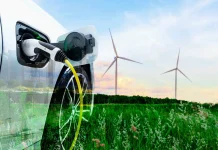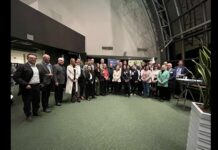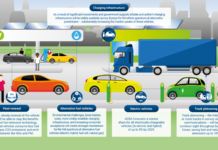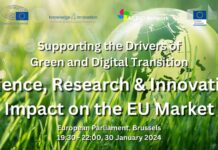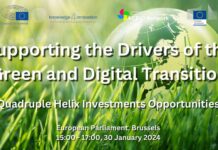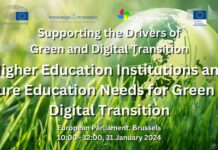Global challenges are becoming increasingly complex, interconnected and interdependent, requiring expert knowledge to understand the potential consequences of political action. At the same time, science, technology and innovation have been both a driver and enabler of global change, with the digital transformation advancing at unprecedented speed. While science is regarded as a public good, independent, transparent, politically neutral and life-saving, recent years also saw the rise of a populist narrative questioning scientific facts, discrediting institutions, and projecting ‘alternative truths’, thus undermining public trust in democracy and multilateralism.
What is Science Diplomacy?
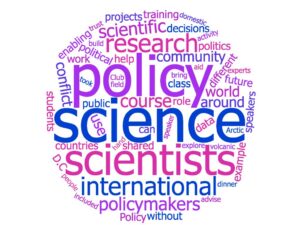
Science diplomacy eludes an agreed definition but is generally understood to include three strands (see Royal Society/AAAS 2010):
- Diplomacy for science – the use of diplomatic action to facilitate international scientific collaboration, e.g. by negotiating R&D agreements and exchange programmes or enabling the establishment of international research infrastructures;
- Science for diplomacy – the use of science as a soft power to advance diplomatic objectives, e.g. for building bridges between nations and creating good will on which diplomatic relations can be built;
- Science in diplomacy – the direct support of diplomatic processes through science, e.g. by providing scientific advice and evidence to inform and support decision-making in foreign and security policies.
Europe has a long tradition in science diplomacy, though it may not always have been labelled as such in the past. Prominent examples of institutions established in Europe with both, a scientific and a science diplomacy motivation, include
the European Organization for Nuclear Research (CERN) established in 1954,
the European Commission’s Joint Research Centre (JRC) established in 1957,
the Abdus Salam International Centre for Theoretical Physics (ICTP) established in 1964, and the International Institute for Applied Systems Analysis (IIASA) established in 1972, to name but a few.
One of the most recent examples is the International Thermonuclear Experimental Reactor (ITER) currently being built in Southern France. The EU also provided significant funding to the establishment of the Synchrotron-Light for Experimental Science and Applications in the Middle East (SESAME), which is a joint undertaking of Israel, the Palestinian Territories, Egypt, Jordan, Iran, Pakistan, Turkey and Cyprus.
However, it was only in the last decade that the concept of science diplomacy has been conceptualized and mainstreamed in foreign and security policy. Various EU Member States have embarked on developing science diplomacy strategies in recent years or created science-related positions in their Ministries of Foreign Affairs such as Science Advisors, Chief Science Officers, Special Envoys for Science Diplomacy, or Tech Ambassadors.
In parallel, new institutional players have emerged, such as the International Science Council created in 2018. Others have stepped into the diplomatic sphere, e.g. when CERN was granted the status of observer in the UN General Assembly in 2012.
In addition, relevant networks have been established globally such as the Foreign Ministries Science & Technology Advice Network (FMSTAN), which serves as a global platform for science advisors working in diplomatic services, the Science Policy in Diplomacy and External Relations (SPIDER) network, gathering the science diplomacy community world-wide, or the Big Research Infrastructures for Diplomacy and Global Engagement through Science (BRIDGES) network, through which large international research infrastructures collaborate on science diplomacy matters.
This has been complemented by initiatives such as the Geneva Science and Diplomacy Anticipator (GESDA).
Science and technology play an increasingly important role in the geopolitical arena. Issues span from the race for technological supremacy between global powers to the increasing politicization, militarization and commercialization of the global commons such as the polar zones, the high seas and outer space. New technologies have opened questions for diplomacy, from artificial intelligence to cybersecurity to automated drones. For this reason diplomats need to have a thorough understanding of what is “cooking in the labs” and how this may impact foreign and security policies. Not least the COVID-19 pandemic has shown how important it is for diplomats to reach out beyond traditional circles of foreign and security policy think tanks, and talk to natural sciences, social sciences, medicine, and engineering.
Science, technology and innovation can support diplomatic efforts in many ways. The Paris Climate Accord is among the most prominent recent examples of science enabling an international agreement. Science has always been a backbone of multilateralism through the worldwide cooperation of researchers. Science can help getting traction with non-likeminded countries and lead to tangible results, e.g. making multilateral institutions fit for the challenges of the 21st century.
Against this background, the EU is committed to the primacy of evidence-informed multilateral cooperation and of global solidarity. The COVID-19 pandemic is a case in point, as are climate change and the need to achieve the Sustainable Development Goals. As outlined in the EU’s Global Approach to Research and Innovation, a stronger focus on science, technology and innovation in foreign and security policies enables the EU to respond to such challenges, while simultaneously enhancing its resilience and strategic autonomy.
source: EEAS






